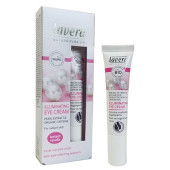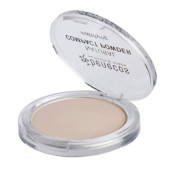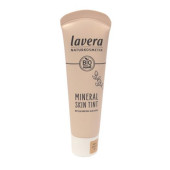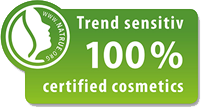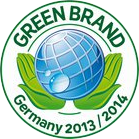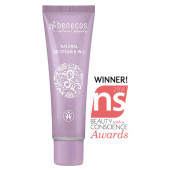Sun Protection Factor Ratings (SPF)
SPF is a measure of a sunscreen's effectiveness in providing protection against UVB rays.
How much UVB does SPF 15 actually block? How about SPF 30? Based on the Colipa (European) sunscreen regulations:
For SPF 15, 93% of the harmful UVB rays are blocked
For SPF 20, 95% of the harmful UVB rays are blocked
For SPF 30, 97% of the harmful UVB rays are blocked
For SPF 60, 98% of the harmful UVB rays are blocked
As you can see, SPF 60 is only 2% more effective than SPF 30, SPF 30 only 3% more effective against SPF 15.
SPF 10 already protects you from 90% of UVB rays.
The NEW COLIPA (EUROPEAN SPF) standards
The newly implemented Colipa rating in Europe now requires that a UVA protection form 1/3rd of the total SPF rating. Hence if the UVA protection is SPF 5 and the UVB protection is SPF 30, the overall SPF allowed to be displayed on the product is 15, despite the fact that the UVB protection is actually SPF 30. Currently, in the US, the FDA's SPF rating is a measure of a sunscreen's protection against UVB, there is not a UVA requirement.
Lavera Sunscreens and the Colipa Standards
The current 2009 Lavera sunscreens sold in Canada and the US are rated in accordance to the 2008 European (Colipa) rules - the SPF rating displayed is the measure of effectiveness against UVB. The UVA requirement of 1/3 UVB is a tough requirement for any natural sunscreen to achieve, and has resulted in a number of European natural sunscreen vendors exiting the market. Lavera remains committed to the the natural sunscreen market and is working on an all natural formulation for 2010 that will provide a UVB protection of SPF 30 and a minimum UVA rating of SPF 10, hence an overall SPF of 30.
Differences between FDA and Colipa calculated SPF ratings
The following FDA Proposed Amendment document provides some insights into the differences between FDA and Colipa SPF ratings:
Sunscreen Drug Products for Over-the-Counter Human Use;
Proposed Amendment of Final Monograph
[Federal Register: August 27, 2007 (Volume 72, Number 165)]
"(Comment 32) Several comments suggested that FDA replace the
specifications in Sec. 352.71 that state ``sun at a zenith angle of
10[deg]'' and ``less than 1 percent of its total energy output
contributed by nonsolar wavelengths shorter than 290 nm'' with the
COLIPA table of ``percent erythemal contribution'' as the spectral
power distribution standard for the light source used in the SPF test
procedures (Ref. 73). The comments suggested that the spectra of
currently used solar simulators (especially around 290 nm and above 350
nm) could cause overestimation of SPF values for high SPF sunscreens.
Because shorter wavelengths can make a very large contribution to
erythema, the comments stated that small errors in the 290 nm region of
solar simulator spectra could have considerable effects. The comments
noted that spectral power deficiencies above 350 nm may give
artificially high SPF values for sunscreen drug products that absorb
poorly in the long wavelength UVA region."
In a nutshell, FDA rated sunscreens may bear a higher rating than the equivalent European rated sunscreens. In addition, it suggests that high SPF rated sunscreens may have very poor UVA protection. Current FDA test criteria is detailed here.
How big is this difference between the US and European SPF? According to Wikipedia, "American SPF numbers are double the SPF numbers on European products.[citation needed] An American SPF 20 sunscreen is the same as SPF 10 in Europe. It is not always clear on the packaging which system is being used." However, as stated in the article, a source for this claim is needed, and we have not seen any definitive study on this particular issue.
Vitamin D defiency and SPF
Of note in the wikipedia article is the reference to findings that Sunscreens do hamper Vitamin D production in the body. "The use of sunscreen also interferes with vitamin D production, leading to deficiency in Australia after a government campaign to increase sunscreen use. Doctors recommend spending small amounts of time in the sun without sun protection to ensure adequate production of vitamin D. When the UV index is greater than 3 (which occurs daily within the tropics and daily during the spring and summer seasons in temperate regions) adequate amounts of vitamin D3 can be made in the skin after only ten to fifteen minutes of sun exposure at least two times per week to the face, arms, hands, or back without sunscreen. With longer exposure to UVB rays, an equilibrium is achieved in the skin, and the vitamin simply degrades as fast as it is generated.". In fact, a recent study claims that at least 75% of Americans are Vitamin D deficient.
So, too much of a good thing can be bad. SPF 30 already protects against 96.7% of UVB rays, SPF 50 against 98%. You don't really need a higher SPF. And you might want to consider Vitamin D supplements!
For additional information on sunscreen and SPF, check out this article from the US Environment Protection Agency: http://www.epa.gov/sunwise/doc/sunscreen.pdf.



